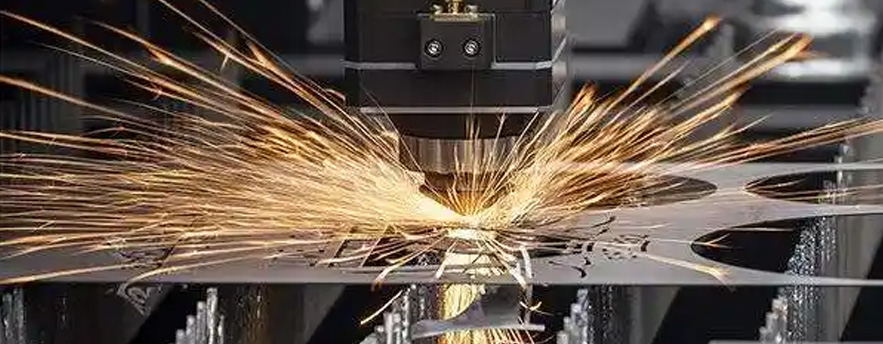1. Laser power
● Definition and function of power
Laser power refers to the energy intensity of the laser beam emitted by the laser cutting machine, usually in watts (W). Power directly affects the energy output of the laser beam and determines the ability of the material to be cut.
● Impact on cutting speed and depth
Higher laser power can usually increase cutting speed and cutting depth. The laser can concentrate more energy on the cutting area, heating the material to melt or evaporate it, thereby achieving a faster cutting effect. However, too high power may cause the material to burn or overheat, so when selecting the power, it is necessary to set it reasonably according to the characteristics of the material and the cutting requirements.
2. Cutting speed
● Description of cutting speed
The cutting speed is the speed at which the laser beam moves during the laser cutting process, usually expressed in millimeters per minute (mm/min). The choice of speed is directly related to the efficiency and final effect of the cutting.
● Relationship between speed and cutting quality
There is a clear mutual influence between cutting speed and cutting quality. Too fast speed may result in incomplete cutting or rough cutting edges, while too slow speed may cause the material to overheat, deform or burn. Therefore, finding a suitable cutting speed is the key to achieving high-quality cutting.

3. Focal length and focus point
● The role of focusing lens
The focusing lens is used in laser cutting to focus the laser beam to a small cutting point, thereby improving cutting efficiency and quality. The size and position of the focus point will directly affect the concentration of laser energy.
● The effect of focal length on laser beam diameter and cutting quality
The focal length determines the diameter of the laser beam on the surface of the cutting material. A smaller focal length will produce a more concentrated and powerful laser beam, which is suitable for cutting thin materials; while a larger focal length is suitable for cutting thicker materials. Accurate focal length setting can improve cutting accuracy and efficiency.
4. Gas type and pressure
● Characteristics of common gases (oxygen, nitrogen, air)
Oxygen: Commonly used for cutting carbon steel, it can react chemically with iron during the cutting process to improve the cutting effect.
Nitrogen: Suitable for cutting materials such as stainless steel and aluminum, it can reduce oxidation and ensure the cleanliness of the cutting edge.
Air: Commonly used for economical cutting, applicable to most materials, but the cutting effect is not as good as special gases.
● The effect of different gases on material cutting effect
The type and pressure of cutting gas will significantly affect the performance of laser cutting. For example, using oxygen can increase the cutting speed, but nitrogen is more commonly used when cutting stainless steel to maintain cutting quality and avoid oxidation. Therefore, choosing the right gas is crucial to cutting efficiency and quality.
5. Material thickness
● How material thickness affects cutting parameters
Material thickness is one of the important factors affecting cutting results. Thicker materials require higher laser power and slower cutting speed to ensure sufficient energy to penetrate the material.
● Cutting strategies for different thicknesses
For thin materials (such as 1-3 mm), a higher cutting speed and moderate laser power can be used to obtain good cutting results. For medium-thick materials (such as 4-8 mm), the balance of power and speed needs to be adjusted. For thicker materials (such as more than 10 mm), higher power and slower speed are required, and the focus setting is also required to avoid overheating and deformation of the material, and to ensure accurate cutting and edge quality.
In short, understanding these basic parameters of the laser cutting machine and their interrelationships will help operators make reasonable adjustments in actual applications to achieve the best cutting results. Click here for more information
































